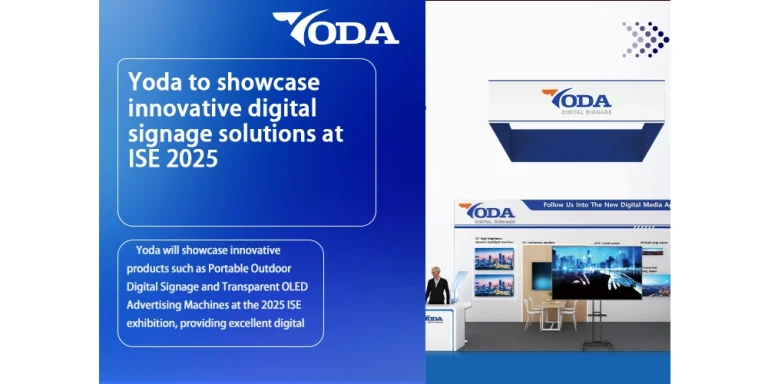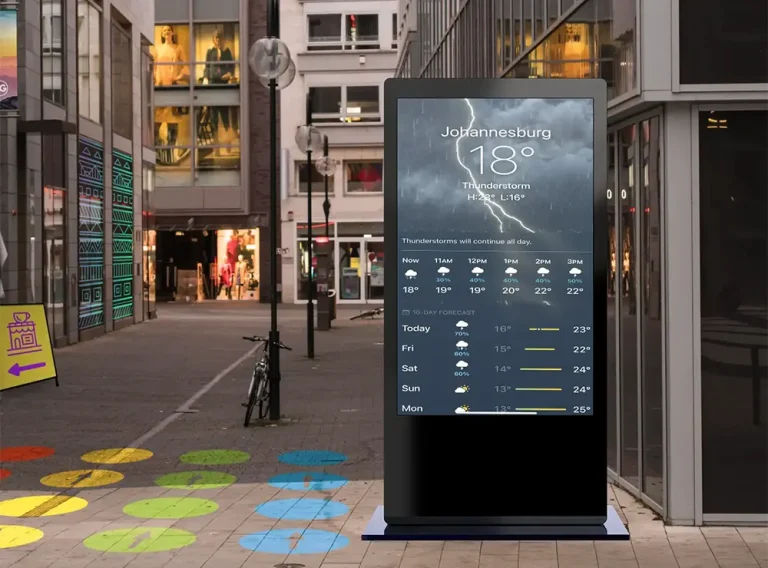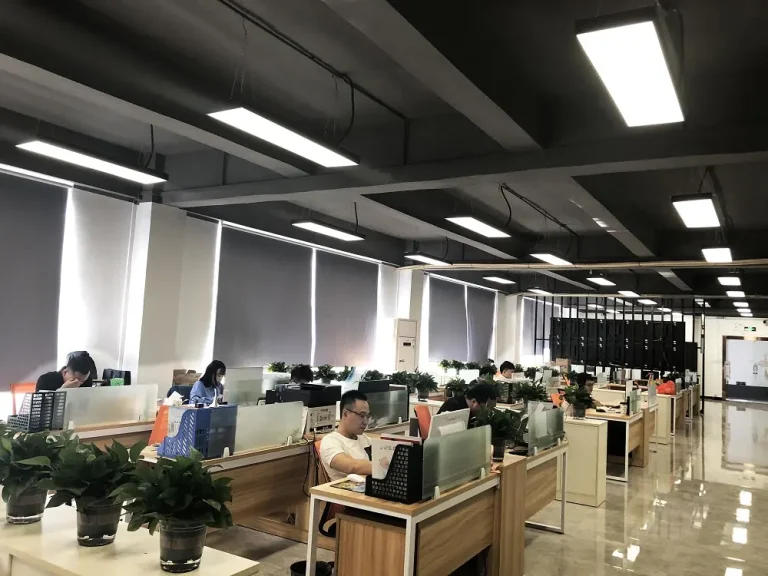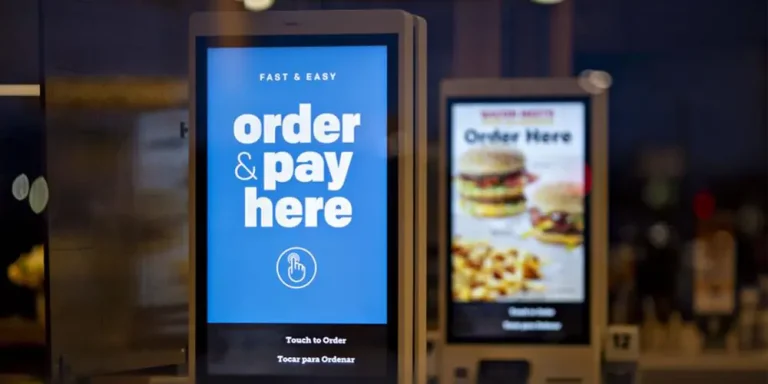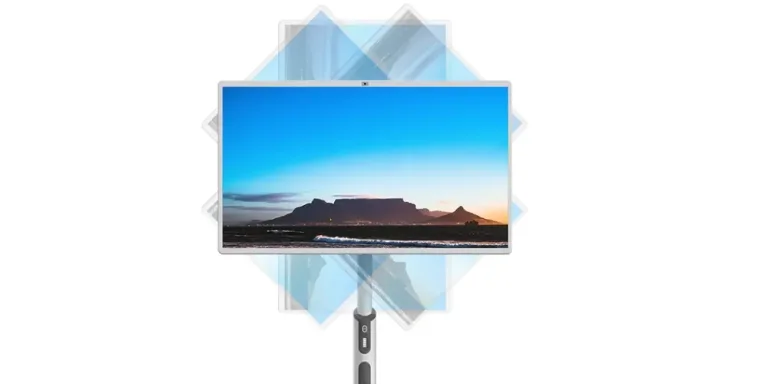
What is Indoor LED Signage?
Author:Yoda . 10/27/2025
In the digital age, more and more businesses, retailers, commercial spaces, and public spaces are upgrading traditional static signage to dynamic, programmable, and remotely manageable display systems. Against this backdrop, indoor LED signage, as a high-brightness, high-resolution, modular, and customizable display solution, has attracted significant attention. This article will provide a detailed, professional overview of: What is indoor LED signage? How does it differ from other display technologies? Application scenarios, key technical specifications, key purchasing considerations, and why choose the Yoda brand E6 series? This article aims to help you better understand the value of indoor LED signage and provide a reference for your purchasing decision.
What is Indoor LED Signage?
Indoor LED signage refers to LED display systems installed in indoor environments (such as shopping malls, retail stores, hotel lobbies, convention centers, offices, and museums) for advertising, brand display, information dissemination, and interactive guidance. It utilizes LEDs (light-emitting diodes) as pixels, arranged in a matrix to form a screen, enabling the display of images, text, animations, videos, and other content. Compared to traditional static signs or LCD screens, indoor LED signage offers higher brightness, wider viewing angles, longer lifespans, and more flexible splicing.
Our Yoda brand’s E6 series is a cost-effective, modular, and customizable indoor LED signage designed for these various indoor application scenarios. The following article will provide more details using the E6 series.
Key Differences Between Indoor and Outdoor LED Signage
When choosing an LED display solution, many people tend to confuse indoor and outdoor LED signage. However, there are significant differences in structure, specifications, and application environments. Understanding these differences will help you more accurately select the right device for your specific scenario. The following comparison focuses on the differences between indoor and outdoor LED signage.
Brightness Requirements: Indoors, where ambient light is controllable, generally require lower brightness, typically 600-1,200 nits or 800-2,000 nits. Outdoor devices, on the other hand, must withstand direct sunlight and strong ambient light, and brightness can reach thousands to tens of thousands of nits.
Pixel Pitch: Due to the closer viewing distance, indoor LED signage typically uses a finer pixel pitch (such as P1.5mm, P2.0mm, P2.5mm, P3.0mm, etc.) to ensure clarity at close range. Outdoor LED signage, on the other hand, can use a larger pixel pitch.
Indoor signage generally operates in a stable environment, free from rain, strong winds, and minimal temperature fluctuations, resulting in lower IP rating requirements. Outdoor LED signage, on the other hand, must be waterproof, dustproof, sun-proof, and wind-resistant.
Installation and Maintenance Cost: Indoor installation is simpler and less expensive. Outdoor LED signage may involve structural supports, permitting procedures, and complex protection.
Application Focus: Indoor LED signage emphasizes close viewing, detailed presentation, branding, and interactive experiences; outdoor LED signage emphasizes long-range communication, visual impact, and wide coverage.
Therefore, when selecting an indoor LED signage display or indoor LED display screen, prioritize pixel density, visual clarity, size, installation environment, and content management capabilities, rather than blindly imitating the specifications of outdoor products.

Main Application Scenarios for Indoor LED Signage
Indoor LED signage features high brightness, high resolution, and high flexibility, making it suitable for a wide range of applications in retail, commercial, public spaces, corporate, and exhibition spaces. The following are typical scenarios, along with long-tail keywords to illustrate their value:
3.1 Retail Stores
In indoor LED signage for retail stores, brands can use LED displays to quickly display promotional information, product recommendations, brand stories, and interactive experiences. Compared to traditional posters or static displays, LED signage is more dynamic and engaging, helping to increase customer retention and conversion rates.
The Yoda E6 series can be deployed in locations such as store entrances, windows, checkout areas, and fitting rooms, showcasing new products, limited-time offers, and brand promotional videos with high-resolution images.
3.2 Enterprises/Office Buildings/Convention Centers
Indoor LED digital screens for business applications emphasize corporate branding, conference presentations, digital promotions, and employee communication. For example, LED displays can be deployed at conference entrances, exhibition halls, boardrooms, and exhibit areas, giving information a more technological and professional feel. The Yoda E6 series, with its high refresh rate, high-definition image quality, and slim installation, is ideal for these high-end indoor applications.
3.3 Other Public Spaces, Education, Hotels, Entertainment, etc.
Indoor LED signage is also widely used in airports, hotel lobbies, museums, theaters, stadiums, and school classrooms. Whether it’s indoor LED digital signage or indoor LED display screens, their core purpose is to enhance the visual experience, convey information, and increase interaction. For applications requiring custom indoor LED display solutions (such as transparent screens, curved screens, and interactive touch screens), the Yoda E6 series also offers customization services.
Technical Keys and Key Considerations for Indoor LED Signage
To ensure your indoor LED signage meets the three criteria of effectiveness, durability, and cost-effectiveness, you must pay attention to its key technical parameters and purchasing considerations. The following explains these aspects, focusing on pixel pitch, brightness, content system, installation and maintenance, and customization.
4.1 Pixel Pitch and Clarity
Pixel pitch refers to the distance between two adjacent LED pixels. This parameter directly determines the screen’s clarity and viewing distance. Because indoor viewing distances are relatively close, a finer pixel pitch (such as 1.2mm, 1.5mm, 2.0mm, or 2.5mm) is recommended. A coarser pixel pitch may result in a grainy effect when viewed from close distances.
Therefore, when purchasing an indoor LED display screen, be sure to ensure that the pixel pitch you choose matches your actual viewing distance.
4.2 Brightness and Environmental Adaptability
Although indoor ambient light can be controlled, brightness is still important. Generally speaking, ideal brightness levels for indoor LED signage range from 600-1,200 nits or 800-2,000 nits. If the brightness is too low, it may not perform well in strong indoor lighting or near windows. If the brightness is too high, it may cause glare or visual fatigue.
When selecting a model, also consider whether it has automatic brightness adjustment to accommodate varying indoor lighting conditions.
4.3 Modular Design and Installation and Maintenance
High-quality indoor LED signage should support modular assembly, quick repairs, unit panel replacement, and color calibration. The Yoda E6 series is designed for this flexibility, allowing for quick disassembly, replacement, and upgrades.
In addition, factors to consider include installation location (wall-mounted, ceiling-mounted, stand-mounted, entrance curtain wall), ventilation and heat dissipation, dust and static protection, and structural strength.
4.4 Content Management System (CMS) and Interactive Features
A good indoor LED digital signage screen is merely the hardware; its true value lies in the content system. It should support remote updates, scheduled playback, linked touch, data analysis, and interactive feedback. Modern retail/commerce trends are shifting from passive displays to interactive engagement.
If you’re considering custom indoor LED display solutions, such as touch interaction, transparent embeds, curved surface mounts, or rentable modules, the brand supplier should provide a complete hardware and software package.
4.5 Customization and Procurement Channels
Project-based clients often have specific requirements for size, shape, and mounting structure. Therefore, when purchasing indoor LED signage online, be sure to confirm whether the supplier supports OEM/ODM customization services, can provide samples, has CE and FCC certifications, and supports remote installation and debugging. The Yoda brand E6 series is targeting the global market and offers customization services, factory direct supply, product quality control, and factory-provided mass delivery.
4.6 Lifecycle, Energy Consumption, and Maintenance Costs
Although the initial investment for indoor LED signage may be higher than that of standard LCDs, in the long run, its long lifespan, low power consumption, and ease of maintenance result in lower overall costs. When evaluating your budget, consider average daily usage, content update frequency, ease of repair, warranty terms, and upgrade options.

Why Choose the Yoda E6 Series Indoor LED Signage?
As a factory-based brand specializing in digital signage and smart whiteboard manufacturing, Yoda is committed to being a source manufacturer. Below, we explain why you should choose the Yoda E6 series as your indoor LED signage solution based on brand advantages, product features, and service offerings.
5.1 Brand Strength and Overseas Delivery Capabilities
Yoda has many years of experience manufacturing digital signage and smart display products and delivers projects to overseas markets, including Russia, Europe, the United States, and Southeast Asia. As a source manufacturer, Yoda offers a more transparent cost structure, flexible customization, and more manageable delivery cycles. For international buyers looking to buy indoor LED signage online, Yoda is a trustworthy choice.
Furthermore, Yoda’s factory possesses international certification capabilities, including CE and FCC, enabling high-volume production. It is suitable for a variety of scenarios, including retail stores, shopping malls, convention centers, and hotels.
5.2 E6 Series Product Features and Technical Advantages
High Resolution and Fine Pixels: The E6 series supports pixel pitches starting from 1.5mm and 2.0mm, making it ideal for close-up viewing and the ideal choice for typical indoor LED display screens.
High Refresh Rate and Stability: Suitable for video playback, interactive content, and real-time updates, it makes indoor LED digital signage even more appealing.
Thin and Lightweight Design: Easy to mount on a wall, ceiling, or stand, with low installation costs and a short construction period.
Customized Solutions: Whether it’s a transparent screen, curved screen, touch-screen interactive screen, or custom-shaped combination screen, the Yoda E6 supports custom indoor LED display solutions.
5.3 Complete Service and Global Delivery
One-Stop Service: Yoda provides comprehensive support, from solution design and sizing customization, module manufacturing, factory testing, shipping and packaging, on-site installation guidance, and after-sales maintenance.
Global Logistics and Support: Serving the global market, we offer overseas shipping, customs clearance assistance, and remote technical support.
Repair and Upgrade: A comprehensive range of after-sales accessories and easy module replacement reduce maintenance costs for customers over the long term.
Content Platform Support: Providing customers with a CMS software interface enables remote updates, scheduled management, and interactive feedback, enhancing the value of indoor LED digital screens for business.
These advantages make the Yoda E6 series an ideal choice for indoor commercial, retail, exhibition, and brand display scenarios.

Future Trend Outlook
Looking ahead, indoor LED signage will continue to evolve to meet increasingly diverse, interactive, and intelligent business needs. Here are several trends worth noting:
Micro-pixel Technology Development: Pixel pitch will become finer, resulting in clearer visuals, enabling cinema-like experiences even at closer viewing distances.
Touch and Interaction Integration: LED displays will move beyond passive displays and increasingly incorporate touch, motion recognition, and data interaction to achieve a two-way connection between content and audiences.
Enhanced Applications for Transparent and Flexible Screens: Applications such as transparent LED display windows, curved LED walls, and even rollable screens will be integrated into shopping malls, museums, and exhibitions. Intelligent Content and Data-Driven Operations: Through AI and big data analysis, brands can automatically switch content based on viewing habits, customer flow, and time of day, making indoor LED digital screens for business more valuable.
Green, Energy-Saving, and Sustainable Design: Manufacturers will place greater emphasis on low-power materials, environmentally friendly manufacturing, recyclable modules, and extended lifespans to further reduce total cost of ownership.
For Yoda, a factory-based brand, these trends represent the direction of future product iterations: Building on the E6 series, future indoor LED signage products with higher pixel density, greater customization flexibility, lower power consumption, and greater intelligent connectivity will be launched to meet the needs of large-scale overseas project delivery.
Conclusion
Through this article, you should have a clear understanding of what indoor LED signage is—not just a technical device, but also a digital communication tool. It has a wide range of application scenarios, clear technical requirements, and a mature selection system. Choosing products like the Yoda E6 series, which offer customization, international delivery capabilities, and modular design, can help you stand out in retail, shopping malls, offices, public spaces, and other settings.
If you’re planning to purchase an indoor LED display screen or are looking for indoor LED advertising displays for retail stores, shopping malls, exhibition halls, or brand flagship stores, please contact Yoda. We offer factory-direct solutions for high-quality, cost-effective, and highly customized indoor LED signage to enhance your brand communication and enhance your space experience.

